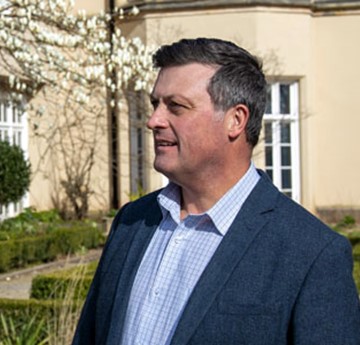Paul Edwards joined Swansea University’s Estates and Facilities Management Directorate in May 1986 at the age of 22 after seeing the position of ‘Gardener’ advertised in the South Wales Evening Post.
Over the years, he rose through the ranks, undertaking an MSc in Environmental Conservation and Management with the support of the University. He is now Grounds Manager and extremely proud of how he and his team have helped develop and shape the University Estate.
How has the landscape changed since you started work?
The landscape has never really stopped changing albeit gradually; trees that I planted when I started are now between 40 and 50 feet high!
How many are in your team?
When I joined the grounds team in May 1986 there were 13 gardeners who took care of different parts of the estate: the Botanical Gardens, the Abbey and Singleton grounds, and the different grounds of the student residences. Today we maintain a similar area with just seven staff.
Do you prefer to work in summer or winter, and which is your favourite season and why?
After so many soakings, I’ve come to loathe the autumn and winter especially as we seem to have so much rain instead of cold, clear frosty mornings.
I’m not bothered if it’s freezing and I know we need rain, but it really makes working conditions challenging and often hinders what we are trying to achieve, so spring and summer have always been my favourite times of year.
The Centenary Oaks Project celebrates the oak trees at the University. Why are they so significant?
The Singleton Campus is set within parkland and its veteran oak trees are an integral part of its character. In turn, the Welsh Oak, Quercus Petraea is part of our culture. The Vivian Estate carried out the planting of these trees more than 100 years ago giving us the striking specimens we see today.
Unfortunately, due to their advancing years many of these oaks are now beginning to fail – they will not last forever – so when the University celebrates its second centenary it is unlikely that there will be many remaining.
To ensure numbers of native species are maintained for the future the University is marking its centenary by the planting of 25 oak trees on the Singleton Campus and 25 more on the Bay Campus.
How does your work differ between the University’s two campuses?
Due to its relatively new landscape the Bay Campus is low maintenance but still comes with its own challenges with it being practically on the beach!
In comparison, the Singleton site is a little more labour-intensive with its extensively-planted areas and mature trees and hedges.
What’s the best bit about your job?
Being able to literally shape and enhance the environment for everyone to enjoy for many years to come.
I am the University’s longest-serving Ground Manager and if I leave the University Grounds in a better condition than I found them, then that’s my job done.

